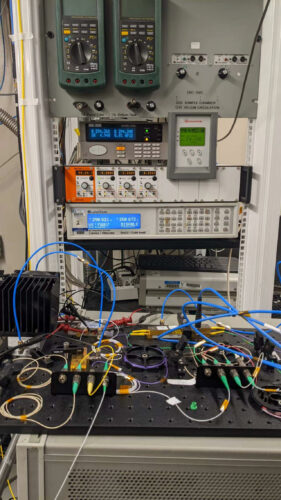Image Courtesy of Yiyu Zhou.
In quantum information science and quantum sensing, single-photon detectors play a crucial role in enabling various scientific breakthroughs and fundamental tests of quantum optics. While photon-number-revolving (PNR) detectors are considered the predominant tool for measuring light, PNR detectors today can typically only resolve up to ten photons at a time.
To address this issue, the Tang Lab at Yale has developed an innovative on-chip detector that allows them to resolve up to one hundred photons with unparalleled accuracy, while also providing high-speed response times. With this new detector, they are able to uncover the statistical properties of photons from a true thermal light source—which emits light because of thermal radiation from its temperature, like an incandescent light bulb—at a level never seen before.
However, creating the photon detector was a challenging process. The research involved complex chip fabrication processes, which included putting together multiple layers of semiconductors, superconductors, and optical circuits. Tang believes that this technology can be extremely powerful, and as quantum infrastructure continues to develop, he hopes that his photon detector can become accessible to regular researchers.
With such promising results, what is the future of this technology? “In five or ten years, we could see the insertion of our detector technology in the commercial world,” Tang said. If researchers can leverage these advances in quantum technology to manufacture quantum devices in a more robust manner, Tang believes that it will play a remarkable role in making such devices more powerful than ever before.

